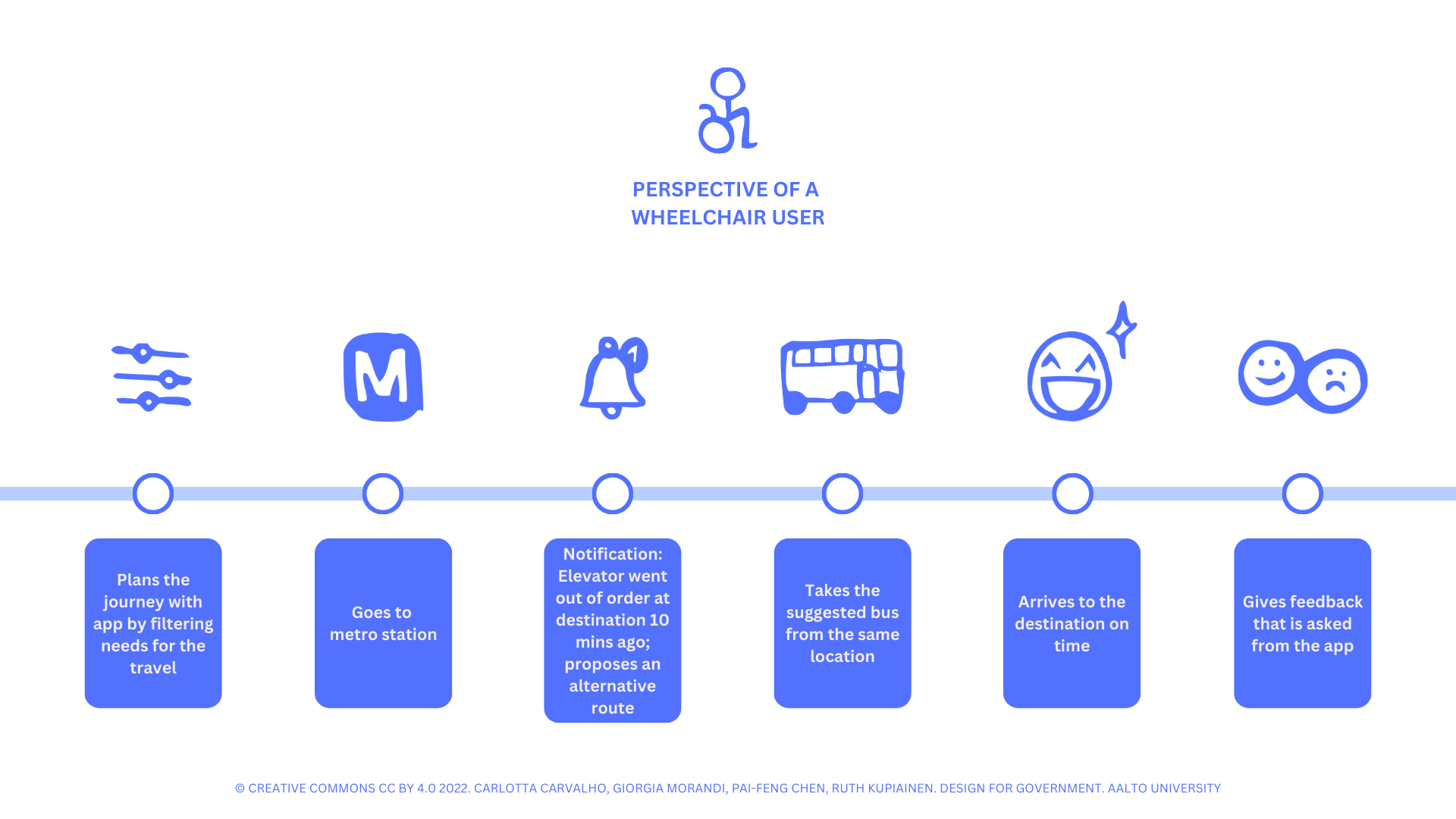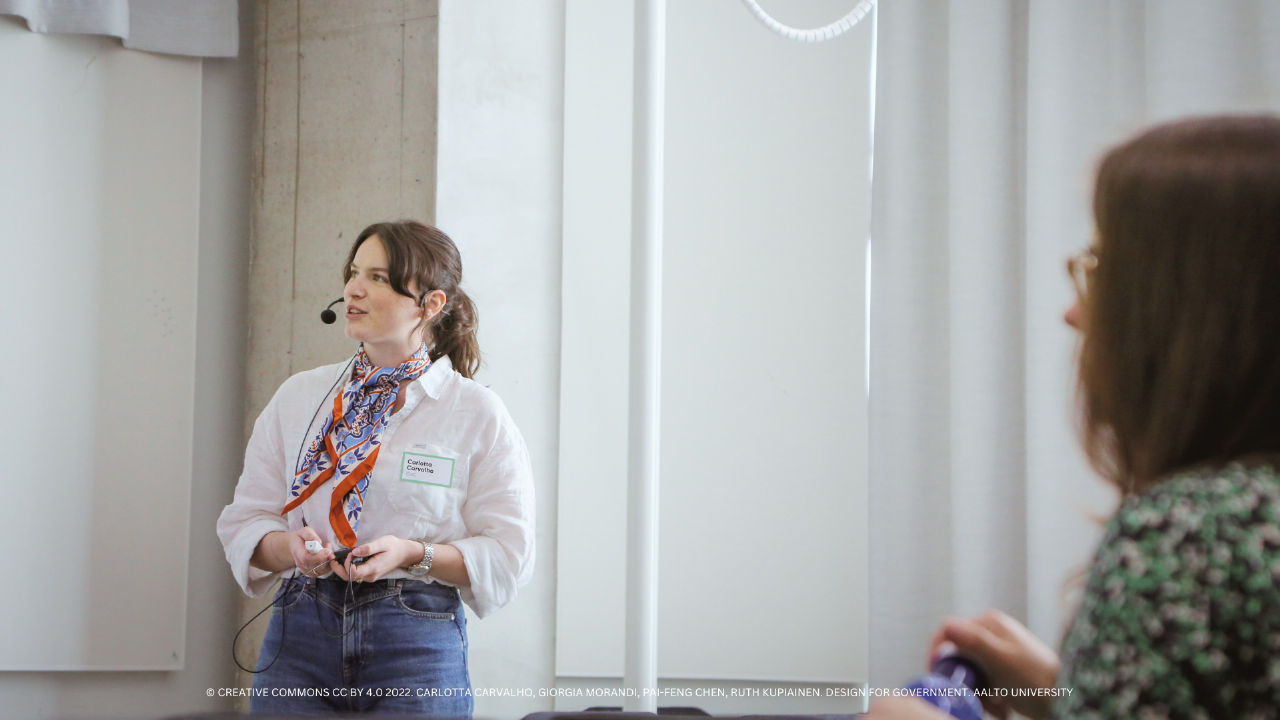This blog post reports on work-in-progress within the DfG course! The post is written by group 2B dealing with the Ministry of Transport and Communications’ brief on Accessible Traffic Chains. The group includes Carlotta Carvalho from Collaborative and Industrial Design program, Giorgia Morandi from the Creative Sustainability program, Pai-Feng Chen from Collaborative and Industrial Design program, and Ruth Kupiainen from International Design Business Management program.
Written by: Carlotta Carvalho
“Humans have changed the way the world works. Now they have to change the way they think about it too.”
– (The Economist, 2011)
When people are asked to imagine how the future will look like, it’s usually one of two things: either very optimistic, and therefore sometimes utopian, or the approach is something more like we are all doomed.
The twenty-first century service designer has gained a lot of complexity in their job when it comes to analysing the threads attached to a problem. As time goes by more and more connections that influence services, their providers and users are made. Technology has of course a big role in that, and it is our job to make sure that it can be used for making everyday life more efficient, without deviating from people’s most important essence – their experience in life. This sparked thinking in our group, which translated into what we proposed for our ideation session, questioning how digital tools can become bridges of interaction between the user and the service provider.
After some discussions in class as well as with our partner stakeholders in the ideation session, we came to realise that the first distinctive characteristic to us here is that the next economy is a social economy. The nature of the problems to be dealt with calls a variety of actors into play: private enterprise, public institutions, local bodies, social enterprises, groups of active citizens (Meroni &. Sangiorgi, 2016). Some key comments made on this were: 1. to speculate how to incentive the user to participate in the project, 2. how to gather feedback from different sources and analyse them automatically, and 3. to understand what important information for the user is – which is currently not possible since the user is not involved in the decision-making process, resulting in slowing down the ability of service providers in responding to the user’s needs.
A way to analyse these questions is through scenarios, and that is exactly what we did. Narratives do not claim to be unique truths, they are considered as frames that facilitate making sense of the world, frames that usually combine past and future, fact, and fiction. Made of hopes, desires and fears, narratives frame people’s understanding of the past, perception of the present and imagination of the future (Vesnic et al, 2019). So, what does the ideal future look like for an accessible travel chain, where there is also accessible information?

Combining the ideal scenario, where every travel runs smoothly due to having access to real-time information, together with analysing a few benchmarking resulted examples, it was notoriously engaging the stakeholders to incentive some critical thinking and investigate what would work or not in this current reality. Sometimes it is easier to narrow down an idea that may seem too big or unrealistic, than coming up with ideas on the spot. User involvement was a recurring topic, as they were always a big part of different solutions presented – both from the scenario and benchmarking. Acknowledging their importance gave us insights for the next steps when building on our final proposal.
However, this necessary evolution towards a service-oriented design culture and practice is not enough. What is required at the same time is a rethinking of the nature and operating modes of design for services itself (Manzini, 2009). It is a question of knowing how design for services needs to evolve into something far larger than it is today, to become an agent for change capable of operating in the new social networks, able to catalyse available social resources and feed the strategic conversation with visions and proposals, at all levels from the problems of everyday to the future of the planet (Meroni &. Sangiorgi, 2016).
You want to know what the future of accessible travel chains will look like? Stay tuned for the next blog post!
References:
Economist, T. (2011). Welcome to the Anthropocene. The Economist, 399, 13.
Meroni, A., & Sangiorgi, D. (2016). Design for services. Routledge.
Vesnic, A. L., Stoermer, E., Rudkin, J. E., Scapolo, F., & Kimbell, L. (2019). The Future of Government 2030+.
Manzini, E. (2009). Service design in the age of networks and sustainability, in Designing Services with Innovative Methods, edited by S. Miettinen, and M. Koivisto. Helsinki: University of Arts and Design.
The DfG course runs for 14 weeks each spring – the 2023 course has now started and runs from 27th February to 31st May. It’s an advanced studio course in which students work in multidisciplinary teams to address project briefs commissioned by governmental ministries in Finland. The course proceeds through the spring as a series of teaching modules in which various research and design methods are applied to address the project briefs. Blog posts are written by student groups, in which they share news, experiences, and insights from within the course activities and their project development. More information here about the DfG 2023 project briefs. Hold the date for the public finale live at 13:00-16:00 AM (EEST) on Wednesday, 31 May at Musiikkitalo!

